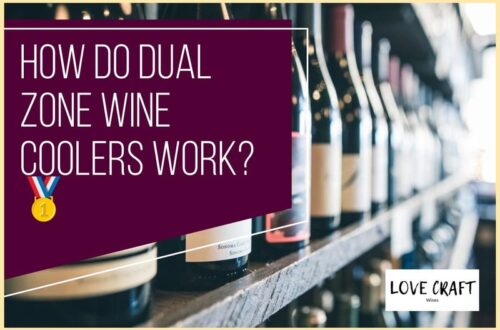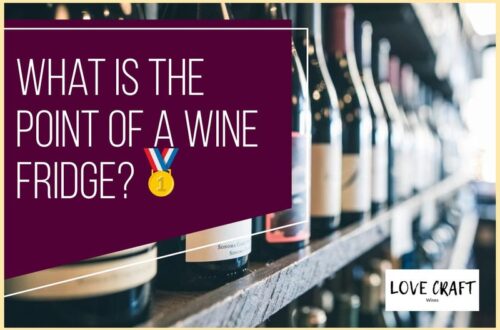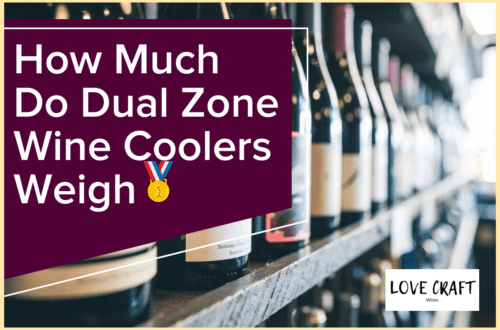Have you ever wondered how long an opened bottle of wine can last before it goes bad? Whether you’re a casual wine drinker or a connoisseur, knowing how to properly store opened wine can save you money and prevent the disappointment of a spoiled bottle.
The shelf life of opened wine depends on various factors, such as the type of wine, storage conditions, and exposure to air. In this article, you’ll learn about the factors that affect opened wine’s shelf life, how to store it properly, signs that it has gone bad, and tips for maximizing its shelf life.
To start, it’s important to understand that opened wine is susceptible to oxidation, which means that exposure to air can cause it to spoil. The rate of oxidation can vary depending on the wine’s acidity, tannins, and alcohol content.
Red wines tend to last longer than white wines because they have higher tannin and alcohol levels, which act as natural preservatives. However, even red wines can go bad if not stored properly. By understanding the factors that affect opened wine’s shelf life, you can ensure that you’re getting the most out of each bottle.
Table of Contents
Factors Affecting Opened Wine’s Shelf Life
You’ll want to pay attention to several factors that can affect how much time you have left to enjoy that delicious bottle of vino.
The impact of temperature is one of the most significant factors that can shorten or extend the shelf life of opened wine. When wine is exposed to high temperature, it accelerates the oxidation process, which affects its flavor, aroma, and color. Therefore, it’s essential to store opened wine in a cool and dark place, away from direct sunlight, heat sources, and appliances that generate heat, such as the oven or the refrigerator’s back.
Another factor that can have a considerable impact on opened wine’s shelf life is air exposure. When you open a wine bottle, the wine comes into contact with oxygen, which triggers the oxidation process, causing the wine to spoil or turn into vinegar. Therefore, it’s crucial to reseal the bottle tightly after each use and remove as much air as possible.
The best ways to reseal opened wine bottles are by using a wine stopper, a vacuum pump, or a cork. These tools can help minimize air exposure and extend the wine’s shelf life. In the following section, we’ll discuss the best ways to store opened wine properly.
Storing Opened Wine Properly
If you’ve ever found yourself sipping on a glass of red wine after a long day at work, you might be wondering how to make sure that the rest of the bottle stays fresh until your next glass. Proper storage is key to keeping opened wine from spoiling too quickly.
Here are some tips for storing reds and decanting whites to increase the shelf life of your opened wine:
-
Store red wines in a cool, dark place, away from direct sunlight and heat sources. A wine fridge or cellar is ideal, but a cabinet or pantry will also work.
-
If you have leftover white wine, store it in the refrigerator with a vacuum-sealed closure or a cork. Decanting white wine will also help to preserve its flavor and aroma.
-
Keep the wine bottle upright to minimize exposure to air, which causes oxidation and spoiling.
-
If you plan to drink the wine within a day or two, replace the cork or use a wine stopper to seal the bottle tightly.
Following these storage tips and techniques will ensure that your opened wine stays fresh for a longer period of time. However, if you notice any of the following signs, it may be time to say goodbye to your wine and open a new bottle:
- The wine has a vinegar-like smell or taste
Signs that Opened Wine has Gone Bad
It’s always a bummer when you’re ready to enjoy a glass of red or white, only to find that the bottle you opened a few days ago has gone bad – but how can you tell if your wine is still good to drink?
One of the key wine preservation techniques is to recork the bottle and store it in the fridge, but even with proper storage, opened wine can still go bad. Luckily, there are some telltale signs that can help you identify spoiled wine.
The first thing to look for is a change in color. If your wine has gone bad, it may appear brownish or cloudy, which is a sign of oxidation.
Additionally, spoiled wine may have a strong, unpleasant odor, such as a vinegar or musty smell. Finally, if your wine tastes sour, flat, or has an off-flavor, it may be time to pour it down the drain.
By identifying these signs, you can avoid drinking spoiled wine and enjoy a fresh, delicious glass instead.
Now that you know how to identify spoiled wine, it’s important to understand how long different types of wine last once they’ve been opened.
How Long Different Types of Wine Last
When you’re enjoying a nice glass of wine, it’s important to know how long it can last once opened. Proper wine storage and preservation techniques can extend the life of opened wine.
Different types of wine have varying shelf lives. Generally, red wines last longer than white wines due to their higher tannin and acid levels. A bottle of red wine can last up to five days after opening if stored properly, while white wines typically last three to five days. Sparkling wines and Champagne have the shortest shelf life once opened, lasting only one to three days.
To maximize the life of opened wine, make sure to re-cork the bottle tightly and store it in a cool, dark place. There are several wine preservation methods, such as using a vacuum pump or wine preservation spray, that can help extend the life of your opened wine.
Tips for Maximizing Opened Wine’s Shelf Life
Properly preserving your favorite bottle of vino is like keeping a blooming flower fresh; just as flowers require the right amount of water and sunlight to thrive, opened wine requires specific storage and preservation techniques to extend its lifespan.
Here are some tips to maximize the shelf life of your opened wine:
-
Using vacuum sealers: One of the most effective ways to preserve opened wine is by using a vacuum sealer. This device removes the air from the bottle, which slows down the oxidation process that causes wine to spoil. Vacuum sealers are easy to use and can extend the life of your wine by several days or even weeks.
-
Refrigeration techniques: Another way to preserve opened wine is by storing it in the refrigerator. This is especially important for white and sparkling wines, which are more susceptible to spoilage due to their higher acidity levels. To keep your wine fresh, make sure to store it in the fridge with a cork or stopper to prevent air from getting in.
-
Avoid exposure to light: Light can also cause wine to spoil, so it’s important to store your opened bottle in a dark place. This can be a wine cellar, a pantry, or even a closet. Just make sure to keep it away from direct sunlight or bright artificial light.
By following these tips, you can extend the life of your opened wine and enjoy it for longer. Remember, the key to preserving wine is to minimize its exposure to air, light, and heat. With the right storage and preservation techniques, you can savor every last drop of your favorite bottle.
Frequently Asked Questions
Can you freeze opened wine to extend its shelf life?
If you find yourself with an opened bottle of wine that you can’t finish, you may be wondering if freezing it is a viable storage option.
While it is technically possible to freeze wine to extend its shelf life, it’s important to keep in mind that this will have an impact on the taste. Freezing can cause the wine to lose some of its flavor and aroma, as well as change the texture.
If you do decide to freeze your wine, it’s best to do so in an airtight container and consume it within a few months.
Overall, freezing wine is not the most ideal storage option for opened wine, and it’s recommended to use alternative methods to preserve its quality and taste.
Is it safe to consume opened wine after it has been left out overnight?
If you’ve accidentally left opened wine out overnight, it’s important to assess its safety before consuming.
Wine storage plays a crucial role in shelf stability, and leaving it out can potentially impact its quality. While wine is generally considered safe to drink after being left out overnight, it’s important to note that it may have lost some of its flavor and aroma.
Additionally, if the wine was exposed to heat or sunlight during this time, it may have spoiled and should be discarded. Ultimately, it’s best to err on the side of caution and use your senses to determine if the wine is still safe to consume.
Can you mix different types of wine together in the same bottle?
Mixing different types of wine together in the same bottle is a common practice known as wine blending. It’s like adding a little spice to your cooking, as wine blending can enhance the flavor combinations of the different varieties of wine.
However, it’s important to remember that not all wines are created equal, and some may not mix well with others. To ensure a successful blend, it’s best to consider the acidity, tannin levels, and overall flavor profile of each wine before mixing.
With proper knowledge and experimentation, wine blending can lead to a unique and delightful taste experience.
Does the size of the opened wine bottle affect its shelf life?
The size of an opened wine bottle can have an impact on its shelf life due to the effect of oxygen exposure on the wine. The larger the bottle, the less oxygen exposure the wine will have since there is less air in the bottle.
However, the impact of storage temperature on opened wine preservation is also important to consider. If the wine is stored at a higher temperature, it can accelerate the oxidation process and shorten the shelf life of the wine.
Therefore, it’s recommended to store opened wine in the fridge and consume it within a few days to ensure the best quality.
Can you reuse a cork to seal an opened wine bottle?
If you’re looking to reuse a cork to seal an opened wine bottle, there are pros and cons to consider.
On the one hand, reusing corks can be a sustainable practice that helps reduce waste. However, it’s important to note that corks can harbor bacteria and other contaminants, which can spoil your wine and affect its taste.
Additionally, corks can degrade over time, which means they may not provide a tight seal for very long. In fact, according to one study, cork stoppers can lose up to 2 grams of mass per year, which can lead to significant changes in the oxygen transfer rate and ultimately affect the wine’s quality.
So, while reusing corks may seem like a good idea, it’s important to weigh the pros and cons carefully before doing so.
Conclusion
Congratulations! You now know how long opened wine lasts and how to store it properly.
Remember that the shelf life of opened wine depends on various factors such as the type of wine, storage temperature, and exposure to air. Red wines typically last longer than whites, and fortified wines like port and sherry can last for weeks after opening.
However, it’s important to note that once opened, wine’s quality will deteriorate over time. In fact, according to a study by the University of California, Davis, wine starts to lose its aroma and flavor after just a few days of being opened. Therefore, it’s best to consume opened wine within a few days to ensure that you get the best taste and quality.
To maximize the shelf life of opened wine, keep it in the fridge and use a vacuum sealer or a wine preserver spray to remove as much air as possible. Also, avoid shaking the bottle and keep it away from direct sunlight.
By following these tips, you can enjoy your opened wine for a bit longer and avoid the disappointment of a bad bottle. Cheers!





